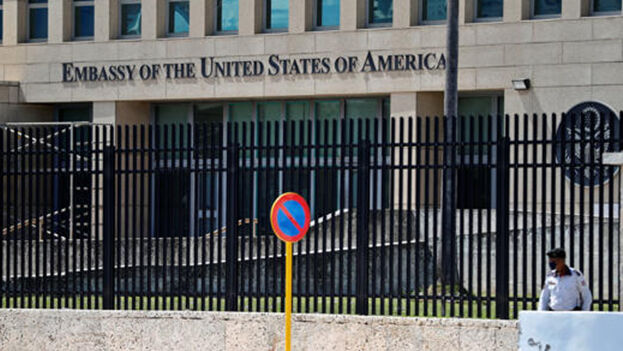
![]() 14ymedio, Madrid, 7 October 2022 — The United States has complied with the immigration commitment agreed on with Cuba for the first time since 2017, and has delivered more than 20,000 visas this fiscal year. According to figures from the State Department, as of August, Washington had issued 19,743 permits for immigrants from the Island, and the September data would be well within the negotiated amount.
14ymedio, Madrid, 7 October 2022 — The United States has complied with the immigration commitment agreed on with Cuba for the first time since 2017, and has delivered more than 20,000 visas this fiscal year. According to figures from the State Department, as of August, Washington had issued 19,743 permits for immigrants from the Island, and the September data would be well within the negotiated amount.
This has been confirmed by sources from the State Department to Cibercuba, which quotes an Administration official. “The preliminary data for September indicate that we issued more than 250 immigrant visas to Cuban nationals at the embassies in Havana and Georgetown,” he told the independent media.
So far, the non-compliance with the quota of visas granted has been insistently cited by the Cuban government, which accuses the United States of the risks faced by its citizens by exposing themselves to illegal exits precisely because of the lack of visas. However, about 200,000 Cubans have reached US territory by land just in the last 12 months, an number 10 times greater, indicating that the exodus by legal channels is out of control. Added to that is the more than 7,000 rafters who left by sea.
The largest number of visas was granted in August, almost 3,800, a figure much higher than in October 2021, when only 323 were issued. The closure of consular services in 2017 after the crisis generated by Havana syndrome — neurological disorders detected in American and Canadian officials in several countries, the first of them Cuba — caused delays that stalled the procedures.
With the restoration of services in Havana, a rapid rise began in May, and since then more than 2,200 visas per month have been exceeded without interruption. Previously, the diversion of this procedure to Guyana resulted in much lower data.
By categories, most of the visas were given to relatives and children of permanent residents, a total of 7,211. Behind those are parents claimed by Americans under the age of 21 and 4,834 for husbands and children of these citizens.
In addition, the visa lottery program has processed 557 requests from the 975 winners, and next year, with the lottery just opened on October 2, there are expected to be 1,358 lucky ones.
This Friday at 12 noon, the U.S. Embassy in Havana announced that it will maintain a question and answer chat on its Facebook page to clarify doubts about its services, which will resume next year under normal conditions.
On September 1, the diplomatic headquarters began processing pending applications for the Cuban Family Reunification Parole Program (CFRP), also suspended since 2017.
According to data from the State Department, there are 100,000 family visa applications from Cubans, of which 22,000 correspond to this program.
In addition, 3,798 business visas and family visits, and 533 for humanitarian reasons, were issued up to September.
The programs that still haven’t resumed are the five-year visitor visas and the multiple entries (B-2), as well as the admission of refugees for those seeking to emigrate to the United States because of persecution and political reasons.
Translated by Regina Anavy
____________
COLLABORATE WITH OUR WORK: The 14ymedio team is committed to practicing serious journalism that reflects Cuba’s reality in all its depth. Thank you for joining us on this long journey. We invite you to continue supporting us by becoming a member of 14ymedio now. Together we can continue transforming journalism in Cuba.
